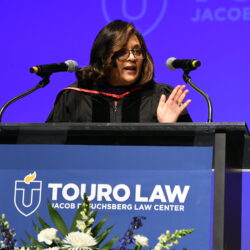
Adams, Banks to expand Gifted and Talented programs in schools

Mayor Eric Adams and Department of Education Chancellor David C. Banks on Thursday announced the expansion of the New York City public school’s Gifted and Talented program serving elementary school students — a program that former Mayor Bill de Blasio wanted to eliminate.
Mayor Adams and Chancellor Banks are adding 100 kindergarten seats and 1,000 third-grade seats, expanding both entry points to all districts.
Through this expansion and updates to the admission process, the city’s Gifted and Talented program will serve every community citywide for the first time. Applications for both programs open on May 31.
“Expanding our Gifted and Talented program to all New York City districts is about giving every child, in every zip code, a fair chance and making sure no child is left behind,” said Adams. “We’re doubling down on this administration’s commitment to our youngest New Yorkers by adding additional seats and removing inequities in the admission process to allow students throughout this city to gain access to accelerated learning.”
“Today we move to end the era of scarcity — the era of making families fight amongst themselves for limited Gifted and Talented seats in far off schools,” said Banks. “Through this expansion, we are providing more opportunities for accelerated learning to more families, while providing an equitable, fair process to identify the students who will excel with accelerated learning.”

The 2022-2023 elementary Gifted and Talented expansion is the result of the DOE’s engagement with parents and community stakeholders to establish priorities for this year’s admissions. Specifically, the DOE met with a diverse set of parent representative groups and advocacy groups with a dedicated interest in this topic and which provided thoughtful, nuanced feedback.
“Expanding the number of Gifted and Talented programs is essential to addressing the inequalities afflicting New York City’s public schools,” said Ronald Lauder (a one-time mayoral candidate) and Richard Parsons, co-founders, Education Equity Campaign. “While some Manhattan districts currently have as many as seven Gifted programs, some communities of color in Brooklyn and Queens have just one.”
Three focus areas became clear: 1) Expanding the number of seats, 2) Creating an equitable screening process, and 3) Providing an expanded third-grade entry point in every district. These perspectives helped the DOE shape its plans, and the agency looks forward to even more expansive engagement on this topic in the future.
Historically, kindergarten has been the initial entry point for New York City Gifted and Talented programs. For the 2022-2023 school year, approximately 100 new kindergarten seats are being added to the Gifted and Talented portfolio — expanding the program to all 32 districts and bringing the total number of seats to 2,500.
To fill these seats, every current pre-K student will be evaluated by their current teacher for a potential nomination. Families of eligible, nominated children will receive an eligibility letter inviting them to apply before the application opens.
And, for the first time ever, every district in New York City will provide an additional third-grade Gifted and Talented entry point, amounting to a baseline of one program in every district and a total of 1,000 seats. Child development research shows that identifying gifted behavior in later grades may provide a more accurate assessment of gifted ability.
Determined by grades in the four core subject areas, the top 10 percent of second graders in each school will be invited to apply to a third-grade Gifted and Talented program. Using grades in the four core subject areas ensures the DOE is using multiple measures to determine eligibility for the program. Grounding the screen at the school level will ensure that district programs are representative of the district’s population.
Leave a Comment
Leave a Comment





